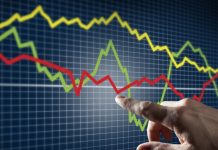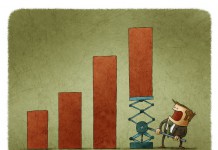Psychology is one of the pillars of a trader’s methodology. In fact ot is the prime driver in a number of cases.
Whatever type of trader you are, and there are plenty of types, your psychology will determine your success as well as your ability to read signals and run positions.
How you react to failure is a major part of the traders makeup. Stress affects everyone differently. It can raise you up or crush you. Knowing yourself will make you more successful not just as a trader but as a person.
There is a theory that drives the basic theory of the psychology of trading; that a person is rational in their decision making and that they re objective in their predictions. It is clear that as far as trading is concerned, those two assumptions hold very little water!
Irrational decisions are common among newcomers just as a subjective view of the market often dominates thinking. Giving some thought to how you react when money or a loss is at stake in a rational manner can help you be more objective when dealing with failure and spur you on to continue.
Financial Behaviourism is a relatively new economic science which studies the way in which the mind handles financial decision making. When making a financially based decision, we rely on objective data like a calculation based on probability but that cocktail has an added ingredient and that is a subjective part. The subjective part is made up of mood and emotions which cannot easily be predicted. In the fact the trader may not even be aware of his subjective actions.
This problem is showed the best with satisfaction curve.
It is tough to interpret a graph which has an emotional or subjective axis and a financial or objective axis. This is a measure of how our mood alters. as the “investment” in the position changes.
Firstly, it is concave on the part regarding profit. An investor feels satisfaction when they for example earn 100 USD. However, when they earn 200 USD, they do not feel twice as happy. This is why it is hard for us to keep profitable transactions longer. We close them after few pips because the joy over here is the biggest, especially when few transactions earlier ended in a loss.
The converse is true of loss making transactions, the graph is convex because our angst grows as we realize that our loss is growing but also that our decision was in all probability wrong.
YOU CAN START TRADING ON FOREX MARKET USING FREE WINDSOR BROKERS ACCOUNT
This emotional response causes us to depart from our basic trading rules. The natural reaction is opposite to what we should be doing rather than cutting losses quickly and running profits, we do the opposite and run the loss more in hope than expectation but cut the profit quickly happy to have some “black ink” on the pad.






![How to install MetaTrader 4 / 5 on MacOS Catalina? Simple way. [VIDEO]](https://comparic.com/wp-content/uploads/2020/07/mt4-os-218x150.jpg)











